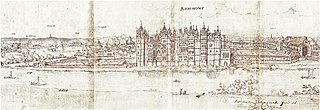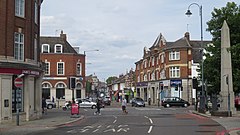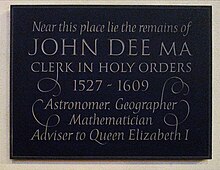
Barnes is a district in South West London, England, part of the London Borough of Richmond upon Thames. It takes up the extreme north-east of the borough, and as such is the closest part of the borough to central London. It is centred 5.8 miles (9.3 km) west south-west of Charing Cross in a bend of the River Thames.

The London Borough of Richmond upon Thames in southwest London, England, forms part of Outer London and is the only London borough on both sides of the River Thames. It was created in 1965 when three smaller council areas amalgamated under the London Government Act 1963. It is governed by Richmond upon Thames London Borough Council. The population is 198,019 and the major communities are Barnes, East Sheen, Mortlake, Kew, Richmond, Twickenham, Teddington and Hampton.
Richmond is a town in south-west London, 8.2 miles (13.2 km) west-southwest of Charing Cross. It stands on the River Thames, and features many parks and open spaces, including Richmond Park, and many protected conservation areas, which include much of Richmond Hill. A specific Act of Parliament protects the scenic view of the River Thames from Richmond.
North Sheen is an area of London, England in the former Municipal Borough of Richmond (Surrey). It was incorporated into Kew in 1965 when the London Borough of Richmond upon Thames was created.

East Sheen, also known as Sheen, is a suburb in south-west London in the London Borough of Richmond upon Thames.

Barnes was a local government district in north west Surrey from 1894 to 1965, when its former area was absorbed into the London Borough of Richmond upon Thames.

Barnes railway station is a Grade II listed station in the London Borough of Richmond upon Thames, in southwest London, and is in Travelcard Zone 3. It is 7 miles 7 chains (11.4 km) down the line from London Waterloo. The station and all trains serving it are operated by South Western Railway.

Richmond Park is a constituency in Greater London represented in the House of Commons of the UK Parliament. Since 2019, its Member of Parliament (MP) has been Sarah Olney of the Liberal Democrats.

Richmond Palace was a Tudor royal residence on the River Thames in England which stood in the sixteenth and seventeenth centuries. Situated in what was then rural Surrey, it lay upstream and on the opposite bank from the Palace of Westminster, which was located nine miles (14 km) to the north-east. It was erected in about 1501 by Henry VII of England, formerly known as the Earl of Richmond, in honour of which the manor of Sheen had recently been renamed "Richmond". Richmond Palace therefore replaced Shene Palace, the latter palace being itself built on the site of an earlier manor house which had been appropriated by Edward I in 1299 and which was subsequently used by his next three direct descendants before it fell into disrepair.

The Municipal Borough of Richmond or Richmond Municipal Borough was a municipal borough in Surrey, England from 1890 to 1965.
Richmond and Barnes was a parliamentary constituency in the London Borough of Richmond upon Thames, a south-western suburb of the capital. It returned one Member of Parliament (MP) to the House of Commons of the Parliament of the United Kingdom. The constituency was created in 1983 and abolished in 1997.

Richmond upon Thames London Borough Council elections are held every four years for all 54 councillor seats in the 18 wards that make up the Borough Council. By-elections are held in individual wards when vacancies arise outside the four-year cycle.

Watney Combe & Reid was a leading brewery in London. At its peak in the 1930s it was a constituent of the FT 30 index of leading companies on the London Stock Exchange. It produced Watney's Red Barrel.

St Mary the Virgin, Mortlake, is a parish church in Mortlake, in the London Borough of Richmond upon Thames. It is part of the Church of England and the Anglican Communion. The rector is The Revd Canon Dr Ann Nickson.

St Mary Magdalen Roman Catholic Church, Mortlake, is a Roman Catholic church in North Worple Way, Mortlake, in the London Borough of Richmond upon Thames. The church is dedicated to Jesus' companion Mary Magdalene. It is located just south of Mortlake High Street and the Anglican St Mary the Virgin Church. St Mary Magdalen's Catholic Primary School is just north of the churchyard.

The Terrace is a street in Barnes in the London Borough of Richmond upon Thames. It forms part of the A3003, and runs west from its junction with Barnes High Street and Lonsdale Road to the east, where it becomes Mortlake High Street. Only one side of the street has houses; they all overlook the River Thames.

Mortlake High Street is a street running through Mortlake in west London in England, United Kingdom. Located in the London Borough of Richmond, it is the historic high street of Mortlake dating back several centuries. It runs from east to west, beginning at The Terrace, Barnes and running parallel to the southern bank of the River Thames and finishing at Mortlake Green close to Mortlake railway station and the site of the former Mortlake Brewery. It forms part of the A3003 road.
























